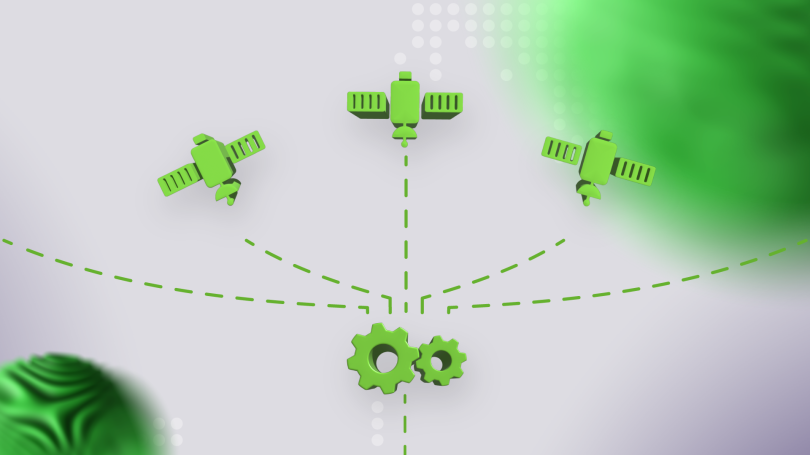The world of GNSS added value services is evolving rapidly. While GNSS satellites provide positioning and timing information, they do come with some inherent limitations degrading the accuracy. These include orbit and satellite clock errors, atmospheric conditions, and conditions on the ground that can lead to multipath, or signal interference. Other GNSS added value services rely on distributing critical safety and integrity information or high-volume data like various map layers.
Until recently, these limitations rarely presented a major problem. However, while we may not need to-the-centimetre accuracy when finding our way around using a smartphone, it’s quite a different matter in precision use cases. For autonomous operations in areas like agriculture, surveying, and logistics, just having a GNSS receiver picking up signals from satellites isn’t enough. One way to improve the position accuracy is to apply corrections, which are distributed over a separate channel.
Besides higher accuracy, end users might be looking for integrity information to enhance safety, improve the continuity of their operations, or to have an overview of service availability for mission planning. These enhancement services are not part of the core GNSS, and often need timely access to quality data along with the GNSS signals.
Furthermore, that data must be consistent and delivered with low latency to be useful. After all, even a minor discrepancy can cause serious problems. Take an agricultural drone tasked with distributing fertiliser across a large field, for example. Any flaw in the auxiliary GNSS data can cause the drone to terminate the mission (that is, if the drone detects the flaw), or worse to misjudge its location, resulting in a potential collision or uneven distribution of fertiliser that ultimately leads to significant financial loss.
To prevent such failures from happening, and to drive GNSS innovation without adding risk, it’s imperative that you have the software and infrastructure necessary to handle the collection and delivery of GNSS data. Off-the-shelf software solutions are rarely adequate for handling the unique aspects of these workloads, such as real-time data delivery, high sensitivity to data loss, and high data volume and velocity.
Optimising GNSS data for high availability
Prior to distributing any content, it’s necessary to determine factors driving the system architecture, such as data format, the expected number of consumers, latency requirements, safety aspects, and coverage zones.
GNSS added value services can produce very large and diversified volumes of data, all of which must be readily available for the applications that depend on them to be able to function as intended. For that we need a content delivery network (CDN) that can support a very high throughput, offers a high resilience against data loss, and speeds up data distribution by caching content in data centres nearest to end users.
Most CDNs, such as Akamai and Cloudflare, have been originally designed to serve up web content like HTML pages, images, and videos. They’re built with general use in mind, but there might be more to it in the case of GNSS applications. GNSS-based solutions often require additional logic layers to provide services like spatial data conversion and search, compression, authentication, or redundancy.
Resilience is another key consideration, as any discrepancy in data availability or quality can lead to loss of operational continuity, or worse provide misleading information resulting in serious problems for end users. Creating software and infrastructure solutions for GNSS-based services requires a multifaceted approach built around robustness, adaptability, and fault tolerance. A custom-built solution may, for example, utilise a combination of edge and cloud computing to optimise performance and improve resilience against network disruptions. Load balancing is another essential feature which, when implemented well, ensures optimal resources utilisation. Load balancing combines well with failover, when traffic from a faulty resource can be evenly distributed to the remaining resources.
Preserving service reliability and availability also requires a level of scalability that not just any software solution can accommodate. From databases to application containers, everything needs to be scalable to meet current and anticipated future demands which, also in the case of GNSS applications, can vary suddenly and dramatically.
The challenges of GNSS data distribution necessitate software solutions capable of handling high-volume, real-time data in a variety of formats – and with outstanding resilience to boot. The development of GNSS added value services has never been more dependent on high-quality custom software solutions.
Navmatix leverages its expertise in GNSS to help businesses overcome their data distribution challenges and innovate. Call us today to learn more.


